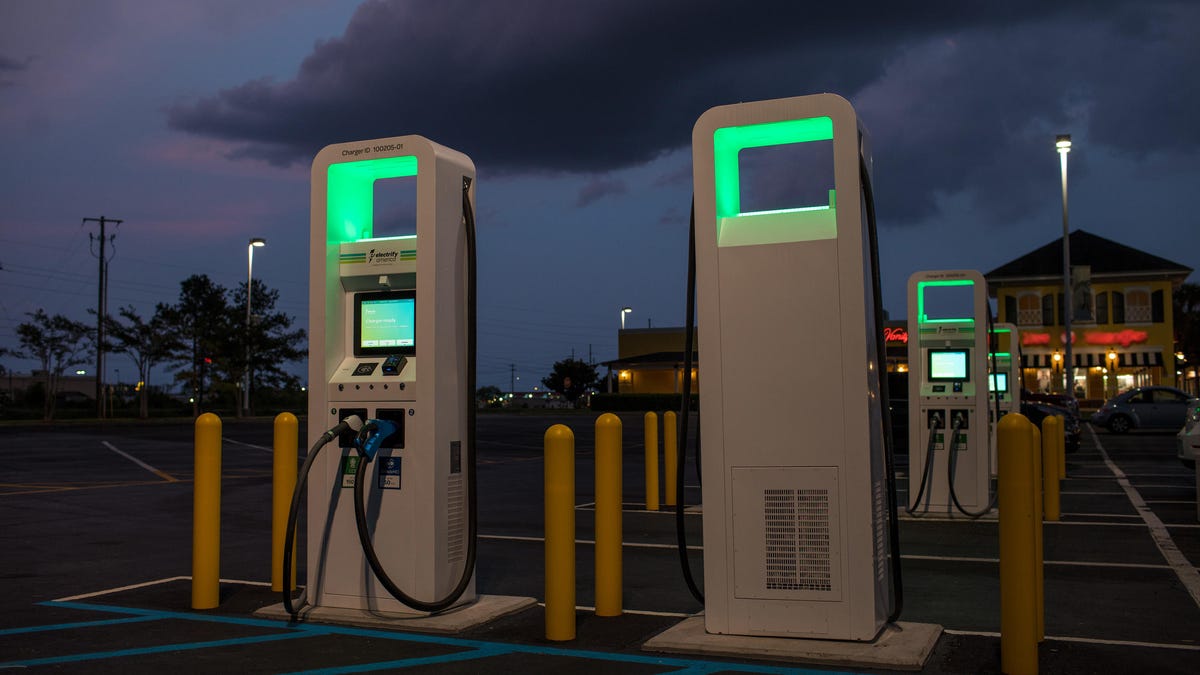Electrify America aims to make it faster and easier to juice up EVs
Put that wallet back, leave your purse in the car; this new technology allows your vehicle to automatically start charging as soon as it's plugged in.
Electrify America has teamed up with an organization called Hubject and together these companies are working to make the EV charging process just a little simpler.
Hubject's Plug&Charge system was introduced to Electrify America's network this month, though it will not be available until 2020. This feature enables faster charging by allowing motorists to skip the payment process, though no, this doesn't mean they get free electricity. Drivers simply won't have to use a smartphone or credit card when charging. Instead, they'll just plug their vehicle in, and it should start absorbing electrons almost immediately, no tapping of a phone or swiping of a card required.
One hurdle Plug&Charge will have to overcome when it opens to the public in America next year is the issue of compatible EVs. Vehicles need to be able to communicate with chargers using an approved protocol. The models that support this right now seem scarce, though the new Porsche Taycan is one example of a car that is Plug&Charge enabled.
Responding to questions via e-mail, a spokesman for Electrify America noted, "Nearly all OEMs have been working on the PnC standard." This includes Audi , BMW of North America, Fiat Chrysler Automobiles and Karma. Many more are participating but declined to be identified.
As for how users link a bank account or credit card to their Plug&Charge-compatible EV and Electrify America's chargers has not been announced yet. According to a company spokesman, these details should be released at a later date, possibly in 2020.
Electrify America is part of Volkswagen of America and is dedicated to promoting EVs by offering a network of charging stations across the country. Hubject is based Berlin and has similar goals, to push the adoption of electric cars around the world.
Plug&Charge uses the ISO 15118 international standard, which outlines the secured communications protocol between vehicle and charger. According to a statement from Electrify America, this "enables the simplified charging functionality for the most prevalent EV charging connector type, called the Combined Charging System (CCS)."
For data safety, Plug&Charge is encrypted. It uses various electronic protocols that were created with the help of security experts. Hubject's V2G Root and Certificate Authority is based on a system that's already up and running in Europe, though in North America it should be the first of its kind.
Adhering to that ISO 15118 standard should help Electrify America and Hubject enable even more conveniences in the coming years, things like smart charging or bidirectional charging. "These energy management features will be necessary as the number of EVs on the road will be growing faster than the ability to increase energy production in the coming years," said Hubject Chief Technical Officer Carsten Puhl. "Adding a North American-based V2G Root for Plug&Charge helps us to securely service our clients on a global basis."
Originally published Oct. 23
Update, Oct. 25: Adds comments from Electrify America spokesman


